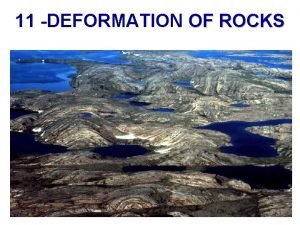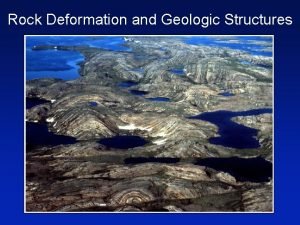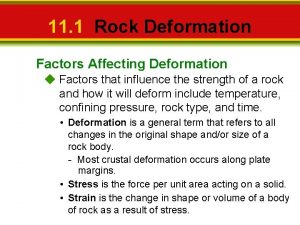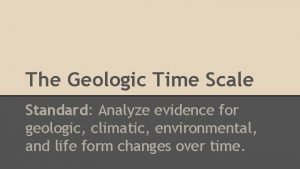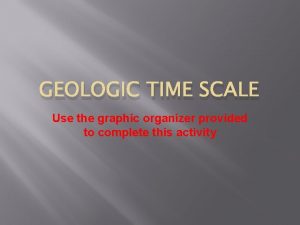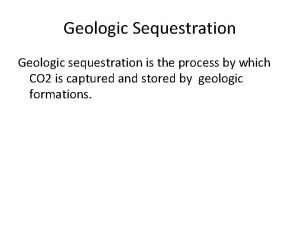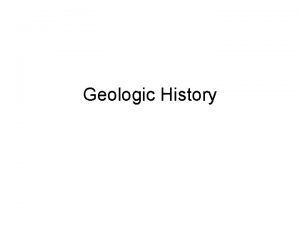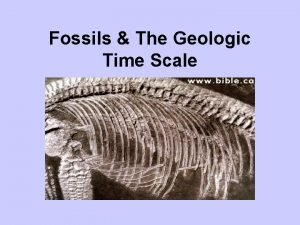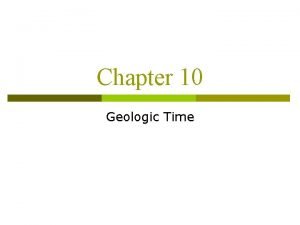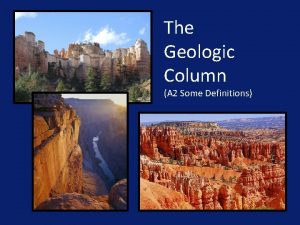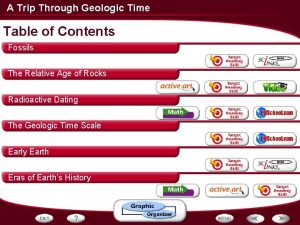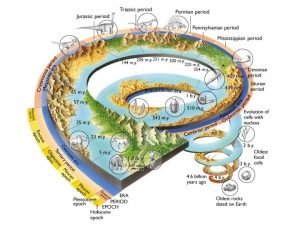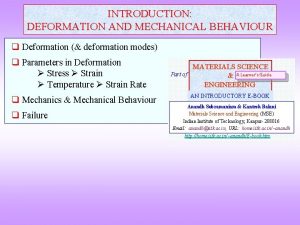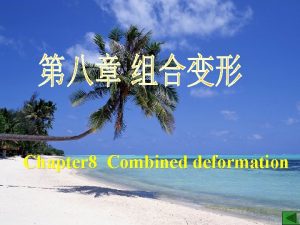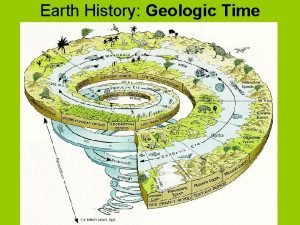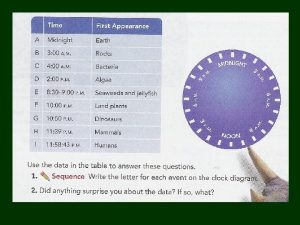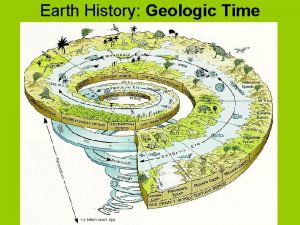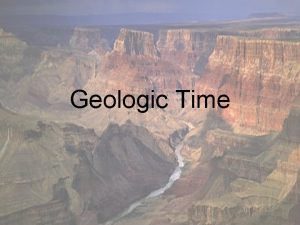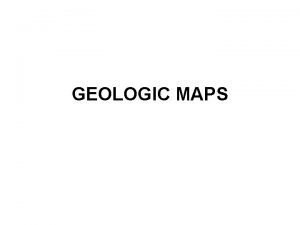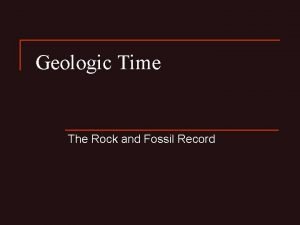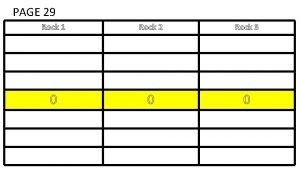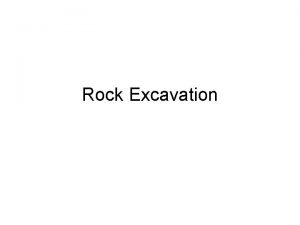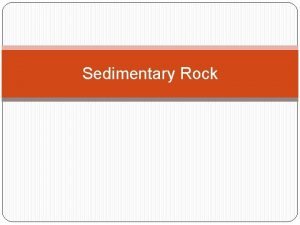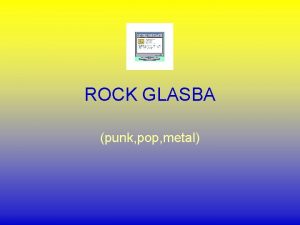Todays list Ch 15 Rock Deformation 1Mapping geologic


























- Slides: 26

Today’s list______ Ch 15: Rock Deformation 1)Mapping geologic structures 2)How rocks get deformed 3) Folds

Study questions______ Ch 15: Rock Deformation · What type of tectonic forces makes a normal fault? A reverse fault? A strike slip fault? What is the difference between brittle and ductile deformation? What are the strike and dip angle of a deformation? What is the shape of an anticline, syncline, and what is the relative age of rocks exposed? What type of deformation is the San Andreas Fault? The mid-ocean ridge?

1) Mapping geologic structures Deformational processes create faults, folds, joints rock structures Visible when rock beds are exposed at surface out crops

1) Mapping geologic structures F Strike and dip TSP 15. 8

1) Mapping geologic structures F Strike and dip Strike Compass bearing of a rock layer relative to North Dip Angle of tilt of a bed from a horizontal plane Fig. 11. 4

1) Mapping geologic structures N 75 E

2) How rocks become deformed Confining pressure: force equal in all directions Differential stress: force not equal in all directions

2) How rocks become deformed Response to differential stress 1. Elastic deformation – the rock returns to nearly its original size and shape when the stress is removed 2. Brittle deformation rocks crack/fracture Shallow in crust 3. Ductile deformation rocks flow Deeper down

2) How rocks become deformed Fault definition: a fracture where displacement has occurred: rocks on either side of fault have moved relative to each other.

2) How rocks become deformed Fault definition: a fracture where displacement has occurred: rocks on either side of fault have moved relative to each other.

Joints Fractures where no slip has occurred Not same as a fault! Why? Slip happens on faults!

2) How rocks become deformed- brittle materials Differential stress: force not equal in all directions Compressive forces: shortening

2) How rocks become deformed- brittle materials Differential stress: force not equal in all directions Tensional forces: stretching

2) How rocks become deformed- brittle materials Differential stress: force not equal in all directions Shearing forces: shearing

2) How rocks become deformed - brittle materials

2) How rocks become deformed - brittle materials Fig. 11. 13 Rift valleys are the result of tensional forces in the crust, creating a series of normal faults. The downfaulted blocks result in a Rift Valley.

2) How rocks become deformed - brittle materials St. Andreas fault is an example for a strike-slip fault Because it is a plate boundary, it is also a transform fault Fig. 11. 10

Fault System Example : San Andreas

2) How rocks become deformed- ductile materials Differential stress: force not equal in all directions Compressive forces: Tensional forces: shortening stretching Shearing forces: Shearing/bending

3) How rocks fold u series of wavelike undulations of once-flat rock layers u many sizes: microscopic to 100’s of meters ucompressive stresses: shorten+thicken crust

3) Folds Anticlines fold upward… Synclines fold downward… Fig. Story 11. 16

3) Folds horizontal and plunging anticline Plunging fold: axis of fold penetrates into the ground Fig. 11. 16



Plunging anticlines and synclines See Fig. 11. 17

3) Folds F Types of folds Symmetrical, asymmetrical, overturning, plunging…. . F Other deformations dome - circular upwarping (anticlinal structure) basin - circular downwarping (synclinal structure) Fig 11. 19
 Compare geologic time with the geologic column.
Compare geologic time with the geologic column. Elastic compliance
Elastic compliance Types of igneous rock
Types of igneous rock Overturned fold
Overturned fold Make your own folds and faults answer key
Make your own folds and faults answer key Ductile
Ductile Factors affecting rock deformation
Factors affecting rock deformation Rock cycle sedimentary
Rock cycle sedimentary Igneous metamorphic sedimentary
Igneous metamorphic sedimentary Rock climb
Rock climb Chapter 3 standardized test practice answers
Chapter 3 standardized test practice answers Chapter 3 standardized test practice answers
Chapter 3 standardized test practice answers What are the rock cycle
What are the rock cycle How is the geologic time scale organized
How is the geologic time scale organized Earth's history and geologic time graphic organizer
Earth's history and geologic time graphic organizer How is the geologic time scale organized
How is the geologic time scale organized Geologic sequestration
Geologic sequestration Definition of geologic history
Definition of geologic history Geologic time scale animals
Geologic time scale animals Fossils
Fossils The longest subdivision of the geologic time scale is the
The longest subdivision of the geologic time scale is the Geologic column definition
Geologic column definition A trip through geologic time answer key
A trip through geologic time answer key Eon division
Eon division Geologic time scale drawing
Geologic time scale drawing Pilot knob volcano
Pilot knob volcano Geologic time
Geologic time



